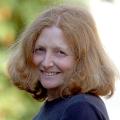FROM sweeping moorland to industrial cities and rugged coastlines, Yorkshire has inspired many great writers.
Authors such as Charlotte and Emily Bronte, JB Priestley, John Braine and Alan Bennett have been stirred by the landscapes of their youth, which have served to influence their novels.
Now a new book celebrates the lives and works of a selection of writers, authors and poets whose work draws upon the varied scenes that make up the region.
Yorkshire Literary Landscapes also examines how the landscape can help to define storylines and characters.
Countless books and articles have been written about landscape in the novels and poetry of the Bronte sisters, but, explains the book, ‘there is much more to the Brontes’ landscapes than that atmospheric blasted heath above Haworth.’
Charlotte Bronte’s 1849 novel Shirley, for instance, has as its background the Luddite uprisings that beset the Yorkshire textile industry. Published under the pseudonym Currer Bell, the book is set around Birstall, with locations including the 17th century Red House in Gomersal, Kirklees Hall, Elizabethan Oakwell Hall - renamed Fieldhead by Bronte, and Gothic Dewsbury Minister.
‘In ‘Shirley’ the Yorke family live in Red House, which is renamed Briarmains.
‘Landscape is integral to the Bronte sisters’, says the book, by York-based author Paul Chrystal.
He describes how, as a young woman, Charlotte went to work at Roe Head School in Mirfield, and when the wind blew, she reminisced about the blustery conditions that typified the Haworth landscape.
Charlotte was not always complimentary about her beloved moors, Chrystal points out. Writing in her preface to sister Emily’s Wuthering Heights, she wonders why tourists had an interest in the ‘wild moors of northern England.’
Bradford and its cityscape feature prominently in much of JB Priestley’s work.
The play When We Are Married, is set in the fictional town of Clecklewyke (believed to be an amalgamation of Cleckheaton and Heckmondwike) and Bright Day, in which screenwriter Gregory Dawson reminisces about his youth in Bruddersford (an amalgamation of Bradford and Huddersfield). We hear about a day out to the village of Bulsden on the edge of Broadstone Moor, for a picnic and a game of cricket and another, fateful, picnic at Pikeley Scar.
The Good Companions (1929) finds the ageing, discontented Jess Oakroyd languishing in Bruddersford.
In the literature and arts magazine Heaton Review, Priestley, who was born in Manningham but lived much of his adult life in the South and Midlands, describes his hometown as ‘ugly and forbidding, and yet within the easiest reach…is some of the loveliest country in England.’
These sentiments were echoed three years later in Priestley’s influential travelogue English Journey, which explores the Yorkshire landscape - rural and industrial.
And in his introduction to the pictorial book The Beauty of Britain, he writes of an area he loved - the Yorkshire Dales: ‘For a variety of landscape these Dales cannot be matched…A day’s walk among them will give you almost everything fit to be seen on this earth.’
John Braine was born in a pokey terraced house off Westgate in Bradford and moved to Thackley when his father took a job at Esholt Sewage Works. Thackley was next door to grim, industrial Shipley, the sort of town that set the scene for his successful novel Room at the Top, in which the central character is ambitious young man Joe Lampton.
Joe has moved from the dreary factory town of Dufton to Warnley to assume a secure, but poorly paid, post in the Borough Treasurer's Department. Determined to succeed, and ignoring the warnings of a colleague, he pursues Susan Brown, daughter of the local industrial magnate, with, as the tale progresses, disastrous consequences.
‘The 1959 film of the book, in particular, clearly highlights and compares the bleak urban landscape of Dufton - fifties Thackley - with the promise offered by Warley,' writes Chrystal.
Describing the Yorkshire landscapes and locations which coloured and influenced their writing and characters, and which can still be visited today, the book makes use of archive images and examples of each author’s writing.
Many of those featured in the book were born and lived in Yorkshire, while others, such as Bram Stoker and JR Tolkein visited and were inspired by what they found. ‘Abraham, or ‘Bram’ Stoker has provided us with one of England’s most famous and haunting Yorkshire literary landscapes by making Whitby the setting for his Gothic novel Dracula, published in 1897.
Tolkein was very taken by a wood near Holderness, which was full of hemlock. His wife Edith danced and sang in the wood, promoting him to use a similar setting for the first meeting of his mythical lovers Beren and Luthien, in the book of that name.
Other authors included in the book include Leeds-born Barbara Taylor Bradford, who, in her best-selling book A Woman of Substance, reinvents Marshall and Snelgrove, the department store that once stood on Park Row in Leeds, as Harte Enterprises, and author Barry Hines, whose upbringing in a mining village near Barnsley had a marked influence on the landscape in his novel A Kestrel for a Knave.
London-born Alan Ayckbourn, Philip Larkin, who was raised in Hull, Thirsk-based James Herriott - the pen name for vet-turned-author Alfred Wright - and playwright John Godber from the mining community of Hemsworth near Pontefract, are also included.
*Yorkshire Literary Landscapes by Paul Chrystal is published by DestinWorld and costs £12.99











Comments: Our rules
We want our comments to be a lively and valuable part of our community - a place where readers can debate and engage with the most important local issues. The ability to comment on our stories is a privilege, not a right, however, and that privilege may be withdrawn if it is abused or misused.
Please report any comments that break our rules.
Read the rules here